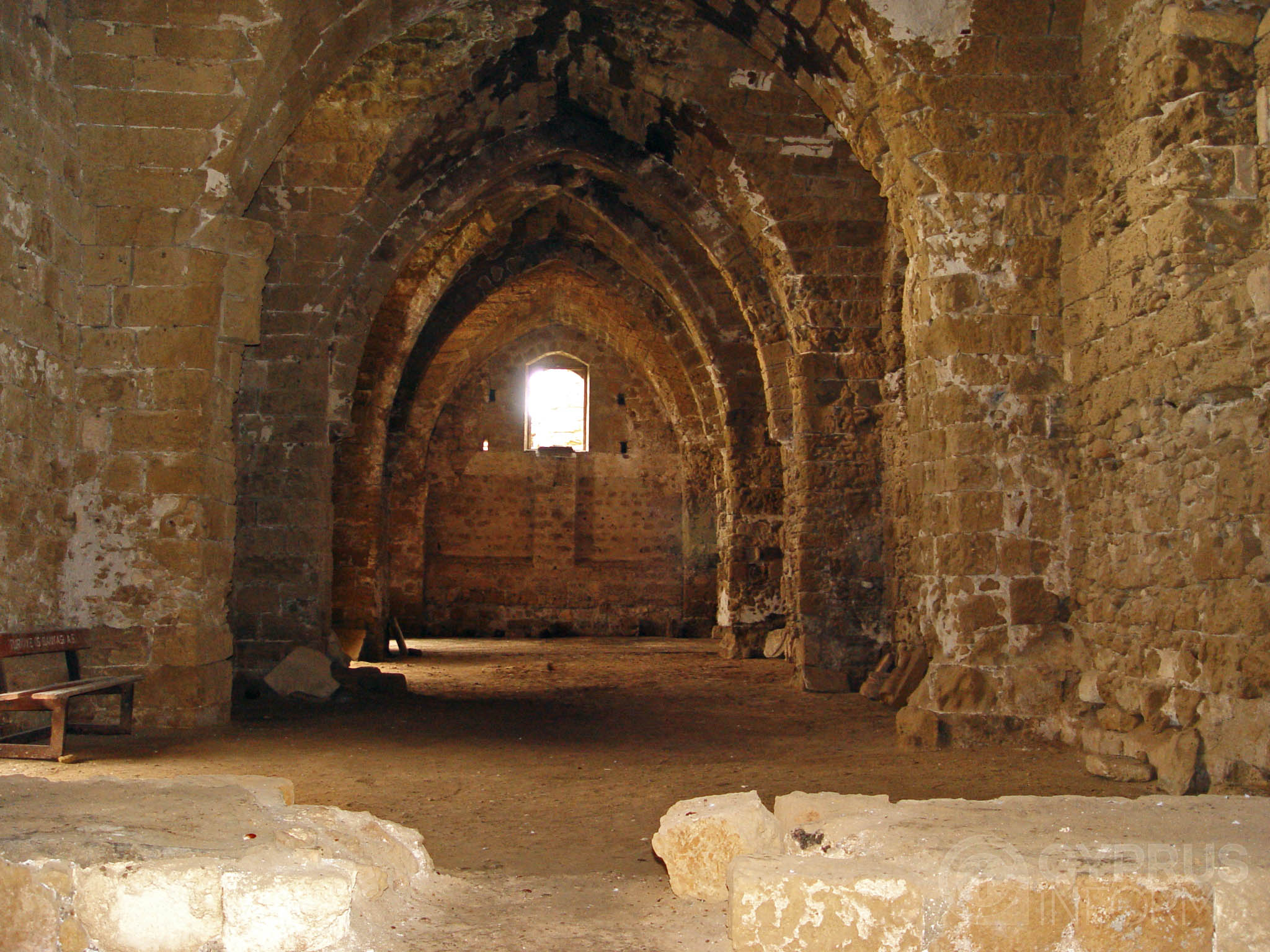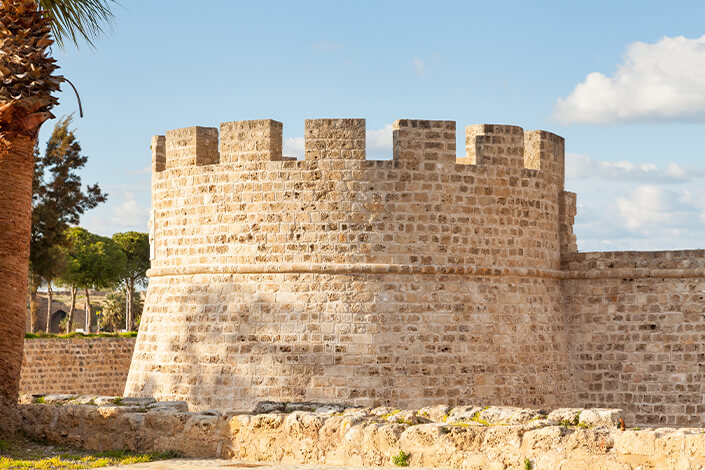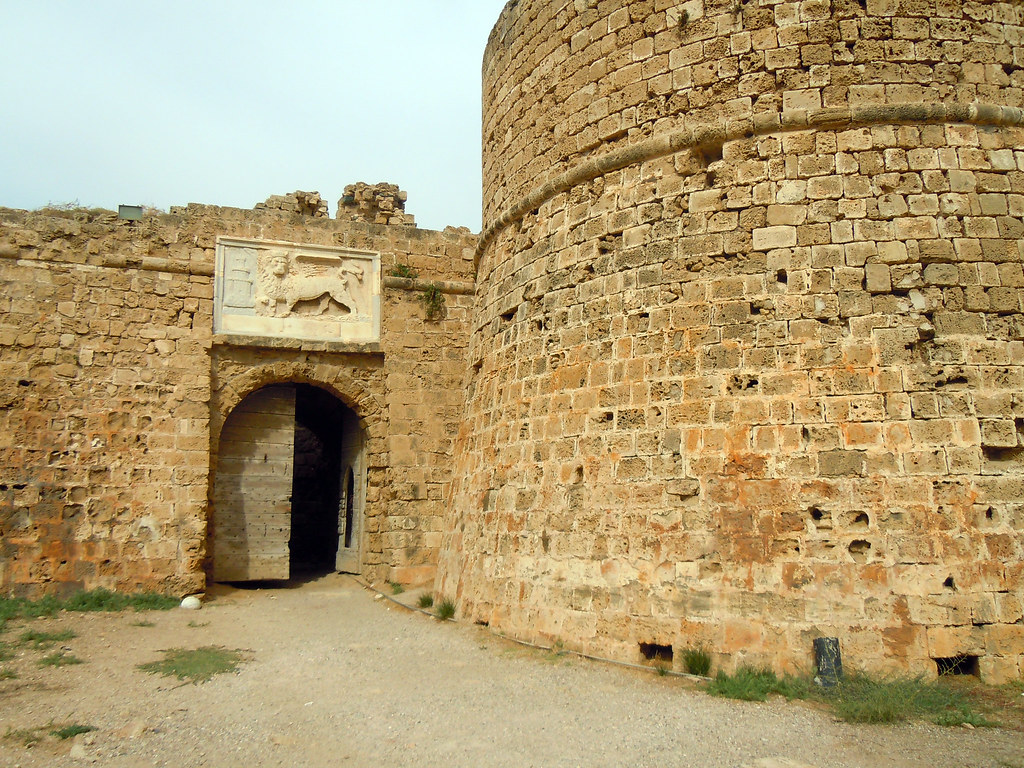


Othello Castle was built in the 14th century by the Lusignans (who ruled the Kingdom of Cyprus) to protect the port against possible enemy attacks. It was also used as the main entrance to Famagusta. It used to be called an "impenetrable fortress" due to it being nearly impossible to attack because of the very deep ditches surrounding it.
After Cyprus was sold to the Republic of Venice, the castle's square towers were replaced with circular ones to suit more modern artillery. After these modifications, a relief of the Lion of St Mark was engraved above the castle's main entrance. The name of Captain Nicolo Foscari, who directed the alterations to the castle, and the date 1492 are inscribed near the relief. Apparently, Leonardo da Vinci advised the refurbishment in 1481. The castle gets its name from Shakespeare's famous play Othello, which is set in a Harbour town in Cyprus.
The castle contains four circular towers. It contains a refectory and a dormitory, which were constructed during the Lusignan period. The castle's yard contains cannonballs left behind by the Spaniards and Ottomans, relics of its turbulent history. After Cyprus was sold to the Republic of Venice, they entirely remodelled the Citadel and turned it into a military stronghold. By removing the first floor and bringing the level of the building in line with the encircling walls, they ensured that it was not visible from outside the city. Venetians greatly strengthened the town’s defences, incorporating the citadel into the main town walls, and the tower offered protection to the port against possible enemy attacks.
Whilst the thick walls were maintained or strengthened, the rectangular towers of this medieval fortress were replaced with circular alternatives to better suit modern artillery such as cannons and gunpowder – under an attack, a non-cylindrical tower could easily have its corners knocked off by gunfire. In effect, the Venetians took over the tower and turned it into a fort, which in turn provided residence for soldiers. It is also known to have been used as a prison in 1566. After these modifications, in 1492 a marble slap of the winged Lion of St. Mark, the patron saint of Venice was engraved above the castle’s main entrance. The front paws of the lion on land represent Venice’s land power, whilst the rear paws in the sea represent her maritime empire. The name of Venetian Captain Nicolao Foscareno, who directed the alterations to the castle, is also credited in the inscription. The citadel was then renamed after Giovanni San Michele, the Venetian civil engineer who was responsible for remodelling much of the city.
